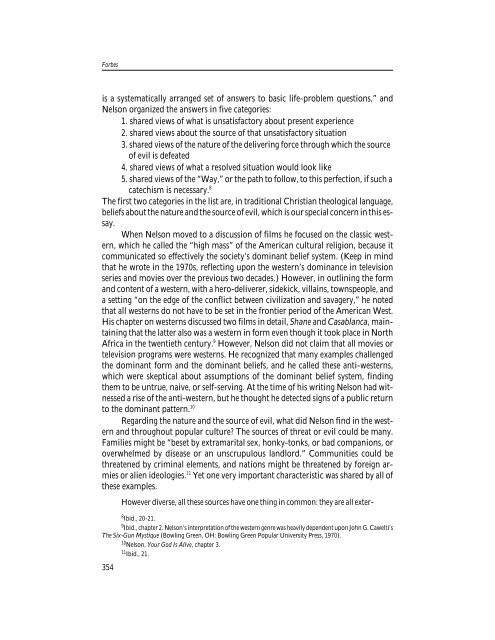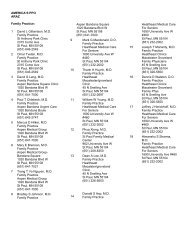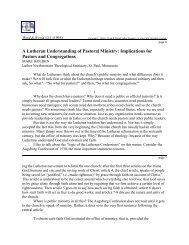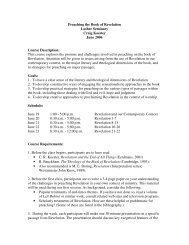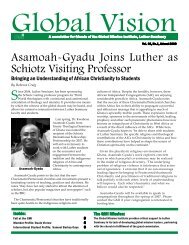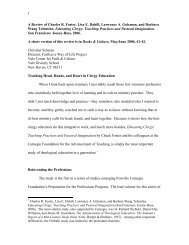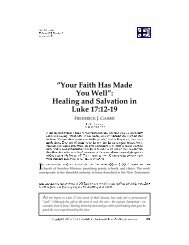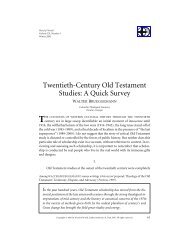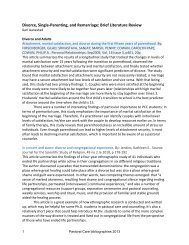Download Article PDF - Word & World - Luther Seminary
Download Article PDF - Word & World - Luther Seminary
Download Article PDF - Word & World - Luther Seminary
You also want an ePaper? Increase the reach of your titles
YUMPU automatically turns print PDFs into web optimized ePapers that Google loves.
Forbesis a systematically arranged set of answers to basic life-problem questions,” andNelson organized the answers in five categories:1. shared views of what is unsatisfactory about present experience2. shared views about the source of that unsatisfactory situation3. shared views of the nature of the delivering force through which the sourceof evil is defeated4. shared views of what a resolved situation would look like5. shared views of the “Way,” or the path to follow, to this perfection, if such acatechism is necessary. 8The first two categories in the list are, in traditional Christian theological language,beliefs about the nature and the source of evil, which is our special concern in this essay.When Nelson moved to a discussion of films he focused on the classic western,which he called the “high mass” of the American cultural religion, because itcommunicated so effectively the society’s dominant belief system. (Keep in mindthat he wrote in the 1970s, reflecting upon the western’s dominance in televisionseries and movies over the previous two decades.) However, in outlining the formand content of a western, with a hero-deliverer, sidekick, villains, townspeople, anda setting “on the edge of the conflict between civilization and savagery,” he notedthat all westerns do not have to be set in the frontier period of the American West.His chapter on westerns discussed two films in detail, Shane and Casablanca, maintainingthat the latter also was a western in form even though it took place in NorthAfrica in the twentieth century. 9 However, Nelson did not claim that all movies ortelevision programs were westerns. He recognized that many examples challengedthe dominant form and the dominant beliefs, and he called these anti-westerns,which were skeptical about assumptions of the dominant belief system, findingthem to be untrue, naive, or self-serving. At the time of his writing Nelson had witnesseda rise of the anti-western, but he thought he detected signs of a public returnto the dominant pattern. 10Regarding the nature and the source of evil, what did Nelson find in the westernand throughout popular culture? The sources of threat or evil could be many.Families might be “beset by extramarital sex, honky-tonks, or bad companions, oroverwhelmed by disease or an unscrupulous landlord.” Communities could bethreatened by criminal elements, and nations might be threatened by foreign armiesor alien ideologies. 11 Yet one very important characteristic was shared by all ofthese examples.354However diverse, all these sources have one thing in common: they are all exter-8 Ibid., 20-21.9 Ibid., chapter 2. Nelson’s interpretation of the western genre was heavily dependent upon John G. Cawelti’sThe Six-Gun Mystique (Bowling Green, OH: Bowling Green Popular University Press, 1970).10 Nelson, Your God Is Alive, chapter 3.11 Ibid., 21.


